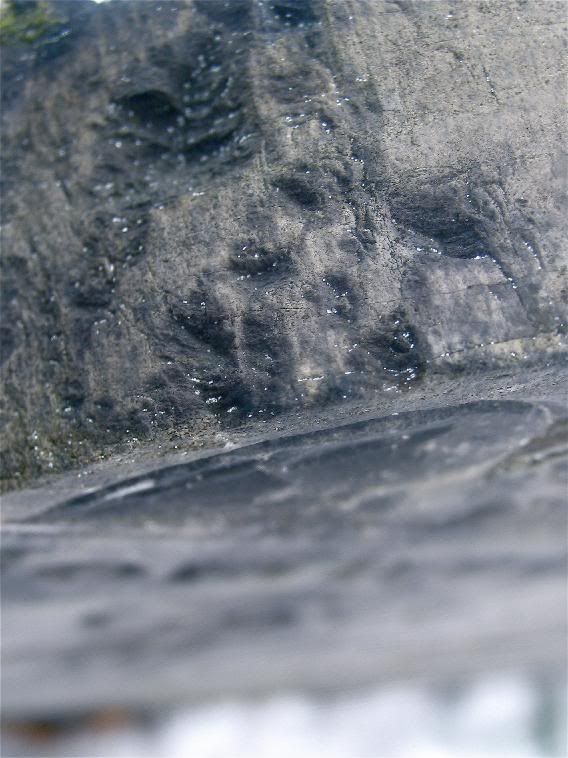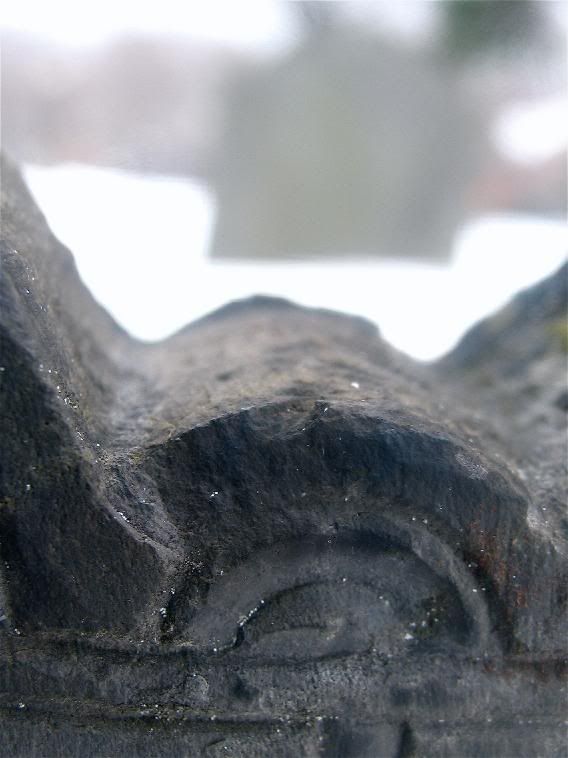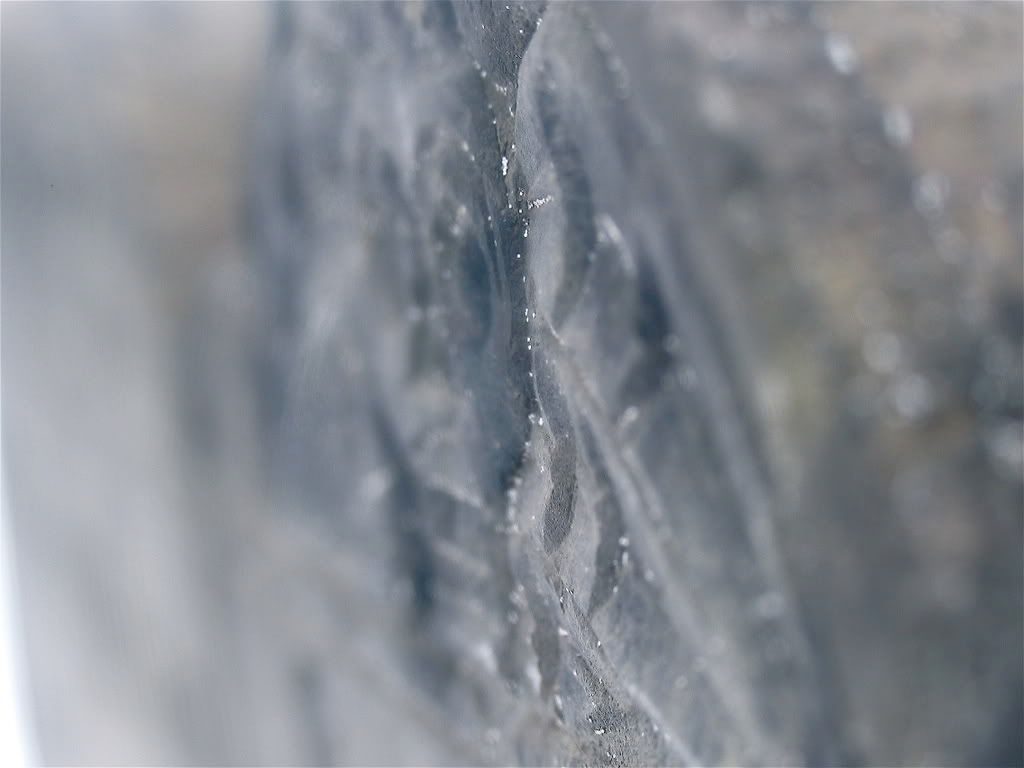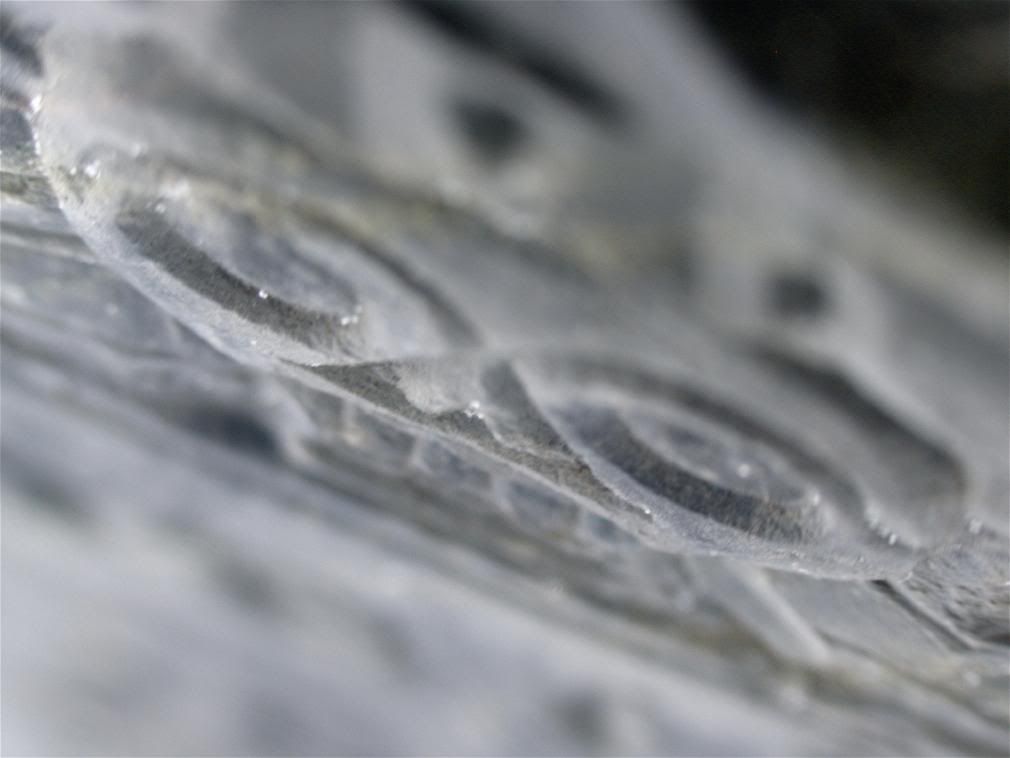dead reckoning



On Christmas Eve, there's not another living soul in the graveyard. There are no footprints but my own in the snow that almost buries the gravestones and, except for my boots steadily breaking the snow's crust, no sound at all. I walk carefully and sometimes I kneel and scrabble in the snow next to a gravestone, in the same way that back in June, in another graveyard, I pulled up grass so I could read names and dates. Until I stand up, I don't notice that my jeans are soaked from ankle to thigh. On one stone, under a winged death's head with goggled eyes, I read that Jonathan Grove was stillborn on February 21, 1721/2. I puzzle for a moment at the doubled date, but then I realize that the carver had been caught between two ways of measuring time.
The old calendar, the Julian calendar, slightly miscalculated the length of the year, overestimating by about eleven minutes. Over time, it added up, and the church festivals, especially Easter, which was tied in some complicated way to the spring equinox and the phases of the moon, began to slip from their correct seasonal spots. In 1582, Pope Gregory XIII, in a papal bull entitled Inter Gravissimas, proclaimed the eponymous Gregorian calendar, which reformed the old calendar by, among other things, subtracting ten days and eliminating three leap days every four hundred years.
Despite, or perhaps because of, Pope Gregory's calendar reform, many Protestant countries, like England and her American colonies continued to use the old calendar. Under the Julian calendar, with some variations, the year generally started on March 25, the day of the Annunciation, nine months before Christmas. One benefit to this system was that the numbering of the months actually made sense, since September was the seventh month, October, the eighth, November, the ninth and December, the tenth. It wasn't until 1752, that England switched over to the Gregorian calendar, pursuant to An Act for Regulating the Commencement of the Year; and for Correcting the Calendar now in Use*
But Jonathan Grove was stillborn long before the American colonies changed their calendars, and, in the graveyard, I read, from right to left, the story on the small three-crested stone. First, Sarah Grove died in 1720 at the age of five weeks. Seventeen months later, her brother Jonathan was stillborn on February 21, 1791/2, that is, after the January 1 new year, but before the one that began on March 25. Fifteen months after that, another Jonathan was stillborn, and he lies with his brother and sister. There is one inscription for all three, part of Psalm 107:30, seemingly chiselled more shallowly, or by a less certain hand. It reads: they are glad because they are at rest.
*The actual language of the proclamation has a bit of a Monty Pythonesque flavor:
The said Supputation, according to which the Year of our Lord beginneth on the 25th Day of March, shall not be made use of from and after the last Day of December 1751; and that the first Day of January next following the said last Day of December shall be reckoned, taken, deemed and accounted to be the first Day of the Year of our Lord 1752; and the first Day of January, which shall happen next after the said first Day of January 1752, shall be reckoned, taken, deemed and accounted to be the first Day of the Year of our Lord 1753; and so on, from Time to Time, the first Day of January in every Year, which shall happen in Time to come, shall be reckoned, taken, deemed and accounted to be the first Day of the Year; and that each new Year shall accordingly commence, and begin to be reckoned, from the first Day of every such Month of January next preceding the 25th Day of March, on which such Year would, according to the present Supputation, have begun or commenced.



12 comments:
I think these might be my very favorite photos that you have ever taken. And I love everything you have ever captured.
When I looked at the first one, I thought I could see faces in the stone. I wonder if anyone else sees that? I also really love the second one with the softness of the light and shape of the stone.
I agree - these photos are very nice. This post made me cry though. I don't know why. Just thinking about you and all that you've been through, and I just feel sad. I just want to go home. I'm in Michigan, and I just want to go back to Chicago, where I can cry in the peacefulness of my empty house. Interesting post also - I learned something.
The photos are bone chilling and beautiful.
As peaceful as I often find cemetaries, I have a really hard time looking at the graves of children. I always have.
These photos are striking. I see tears and tracks of tears all over them.
Great post.
even though you wouldn't have let me even if we lived in the same state...but i wish i could have gone with you.
i wouldn't have said anything. i wouldn't have riden with you. i wouldn't have really been with you. i just would have stood way behind you.perhaps hidden, so that for a few minutes you wouldn't have to suffer alone.
ahhh, you are a woman after my heart. I love traispsing through old graveyards and making light of the stones. The awful incidents of plague and whatnot where scores of family members are struck down in the same year. An obscure church miles from nowhere with a number of Revolutionary war soldiers -- and it turns out the church served as a hospital during the winter at valley forge. And then there are the crazy dates, which I must confess still through me for a loop. Lovely pix, lovely post as always.
We don't have that kind of history out here. It is something I loved about living back East.
I love the photos. When I looked at them I thought about the mothers of those babies underneath the stones. It is so very evident that even ancient grief endures much longer than the bearer.
it is hard to imagine them glad to be at rest, when we know the sorrow that they left behind, isn't it?
and your Xmas picture? that gorgeous photo that i received in the mailbox as well? it is not lost on me that it is thorny.
Christina: Honestly, I find these old gravestones strangely comforting. It's as if they're saying to me in the almost the same way that you -- all of you --do that I'm not alone
Despite living in a prefab neighborhood built sometime in the 1960's, we live on the edge of an old graveyard, the same one I used to explore as a child.
For some reason, it comforts me immensely.
Amazing - all of it. And I have to agree, I think that these are some of my favorite shots of yours ever!
I also agree that I love headstones. And they fascinate me to no end - I could spend an entire day just looking at them...
Post a Comment